Safety is a top concern for car consumers. Figure 1 shows the results of a study conducted by Visteon showing the customer's requirements for the car and the safety of the vehicle at the core. The focus on car safety is not just for drivers and passengers, but also for others on the road. Safety equipment has moved from the physical to the electronics sector, from advances in tire and brake technology, to side impact protection and airbags, to today's driver assistance systems. The latest cars use a large number of electronic technologies and sensors to continuously monitor and evaluate the surrounding environment, display relevant information for drivers, and in some cases even take control of the vehicle. These electronic systems play an important role in improving vehicle safety, comfort and driving efficiency.
This article refers to the address: http://
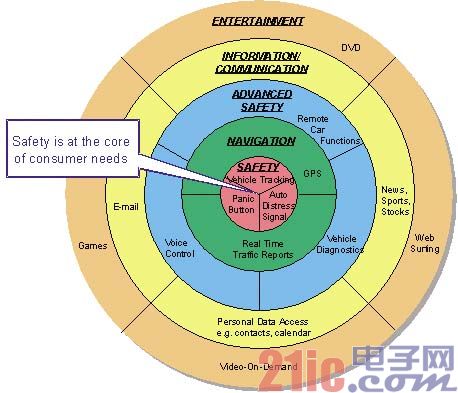
The assisted driving system provides basic safety features such as the addition of an infrared (IR) camera to enhance viewing. More advanced designs also utilize a wide range of sensors to alert potential hazards so that the vehicle can be aware of surrounding traffic conditions, lanes and directions of travel, and possible collision targets. The ultimate goal is that the vehicle can automatically respond to this information, providing drivers with information and vehicle control capabilities under special circumstances to ensure passenger safety. For example, some of the latest trucks have video cameras installed to monitor the road ahead. If the vehicle changes the driving path without using the indicator light, for example because the driver is too tired, the system will give an audible alarm through the speaker inside the vehicle.
By eliminating cumbersome driving actions, assisted driving also provides a higher level of comfort. For example, conventional cruise control allows the driver to set a fixed travel speed while manually controlling when needed. Today's cars offer automatic cruise control (ACC), which automatically controls the throttle and brakes to accommodate the speed of the front vehicle to maintain a safe distance. If the preceding vehicle accelerates away or changes the driving path, the ACC will automatically return to the preset speed of the traditional cruise control.
The assisted driving system also hopes to use the so-called "electronic traction device" to improve traffic efficiency. For example, the team's lead truck is manually driven by the driver, but the following trucks drive automatically. In addition to reducing the burden on the driver, the distance between trucks can be greatly reduced because the electronic response is faster. This not only saves a complete road area, but also saves fuel due to the backward airflow of the preceding vehicle.
Another emerging security technology is called the “passive occupant identification systemâ€. The US government requires that all new cars starting in 2006 must be able to open the airbag according to the size of the occupant. Such systems enable the protective bladder to "smart" open or contract. This occupant-based system will help automakers meet the recently announced Federal Vehicle Safety Regulations FMVSS-208. This regulation requires that the airbag must be able to open more effectively for the weight of different occupants. Since 2004, 35% of each vehicle sold by a car manufacturer in the United States must be equipped with an advanced airbag system, a figure that will increase to nearly 100% by 2006. The simpler system is implemented using weight sensor technology mounted under the passenger seat cushion. The advanced occupant identification algorithm and fast signal processing allow the car airbag controller to open or retract the passenger airbags according to different conditions, thereby greatly improving occupant safety and reducing repair costs. More advanced systems use a camera mounted in the car to detect and identify the occupant, while algorithmically taking into account the occupant's adjustment and distance from the airbag to determine the time, speed and extent of airbag opening when the accident occurs.
Application of Xilinx FPGA in assisted driving system
Figure 2 shows a conceptual block diagram of a Xilinx Field Programmable Gate Array (FPGA) for use in an ACC assisted driving system.
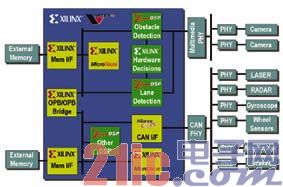
The system is divided into ultra-high-speed input processing and relatively low-speed sensor input and output control information, each part of which is embedded in the corresponding processor (for example, a Xilinx MicroBlaze 32 embedded soft core processor or Virtex-II Pro FPGA embedded in IBM PowerPC) Under the control of ). The high speed section is dedicated to real-time processing of video camera information installed in front of the vehicle. Due to the nature of the application (anti-collision, emergency handling and alarming), real-time processing is absolutely critical. Two or more cameras are usually required to obtain a stereo image, so that the depth of the image (directly related to the actual distance of the previous object) can be calculated in the FPGA. Combined with radar and laser measurements, as well as motion detection information from gyroscopes and wheel sensors, the situation around the vehicle and the route of travel can be calculated fairly accurately. By replacing the finished video component with a fully flexible FPGA, device manufacturers can easily develop unique, optimized edge detection, image depth and enhancement algorithms that differentiate the performance of competing vendors' systems. Capturing and processing this information in real time requires computationally intensive digital signal processing (DSP) algorithms. However, software processing does not meet performance requirements; although traditional DSP processors are an option, multiple devices are often required to perform such high-speed tasks. Even ASSP video processors are not comparable to the extremely high-speed DSP performance of Xilinx FPGAs (also known as XtremeDSP processing). After the video is processed, the decision tree mechanism can be divided into hardware components for emergency algorithms (such as emergency collision avoidance processes), and processor software portions for audible alarms such as travel path deviations. Dividing speed-critical processing into FPGA hardware also tests real-time speed, which is not possible with software.
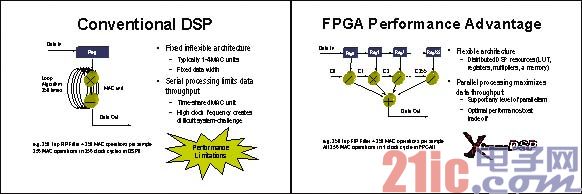
XtremeDSP real-time image processing
So why does Xilinx FPGAs provide faster video processing performance than traditional DSPs? The most fundamental reason is that FPGA fabrics enable parallel processing of data. The latest Virtex-Pro family of devices from Xilinx also integrates an array of embedded high-performance multiplier blocks to further enhance image processing. In contrast, DSP processors sequentially execute instructions and data and process them serially. So FPGAs can be configured as multiply-accumulate (MAC) cell arrays that can perform multiple operations (within a single clock cycle) in parallel, rather than requiring multiple clock cycles to execute in one or a small number of MAC cells as in a traditional DSP. .
Xilinx FPGAs also have the added benefit of using accurate MAC arrays to meet computing requirements. These features are ideal for completing image calculations. This allows parallel calculations of multiple pixel clusters in the image, such as discrete cosine transform (DCT) macroblocks, without having to scan the entire image sequentially. The increased performance of the FPGA also brings additional benefits. For example, the amount of memory required to buffer pixel values ​​can be smaller because it can now be processed in real time.
In addition to real-time performance, Xilinx FPGA's reprogrammability provides excellent system flexibility and support for algorithm upgrades (even after deployment). This is very important because the current driver assistance system is still in the early stages of development. As edge and target detection algorithms continue to improve, hardware upgrades can be completed in minutes without the need to redesign the board.
Bridging automotive networks with programmable peripherals
With the evolution of truly small networks in cars, device manufacturers must determine which of the many network protocols will be the most successful, or which standards will bring the greatest benefits to themselves. Different network technologies are used to meet the different needs of the car, from the multimedia range in the cockpit (multimedia-oriented system transmission, MOST) to the car control network (such as FlexRay). A pre-verified Control Area Network (CAN) interface core is selected in Figure 2 as an example.
One such emerging network protocol that can be used in a car is Bluetooth. Bluetooth wireless technology is a low-cost, low-power, short-range RF technology for mobile devices and WAN/LAN access points. This standard, derived from the computing and telecommunications industries, describes how a short-range wireless connection can be easily interconnected between devices such as cell phones, computers, and PDAs.
For example, a driver can communicate with a mobile phone in a pocket using a Bluetooth cordless headset. This avoids driver distraction and improves safety. The automotive industry has established a special interest group (SIG) to define Bluetooth car standards. Members of the special interest group include the Automotive Multimedia Interface Collaboration (AMIC), BMW, DaimlerChrysler, Ford, General Motors, Toyota and Volkswagen. An example of Bluetooth in the car is Johnson Controls' hands-free phone system "BlueConnect," which allows drivers to stay in touch with Bluetooth-enabled phones while holding the steering wheel with both hands.
However, long-term support for Bluetooth devices still has problems, and the impact of in-vehicle ambient noise on the operation of Bluetooth devices also needs serious consideration. Cars and other vehicles have a much longer lifespan than consumer products or mobile phones, so chipmakers must address the resulting mismatch between support and service lifecycles. However, at the recent Convergence 2002 show in Detroit, the Chrysler Group exhibited cars with Bluetooth technology.
One of the biggest benefits of using an FPGA compared to using an ASSP is that it allows engineers to design interfaces and peripherals that precisely match system requirements. This is especially useful when trying to connect to different car networks in the early stages of development. When trying to get products to market quickly, chipset or ASIC redesign is costly and time consuming. In the early days of standard implementation, if the network protocol specifications changed, in order to support the latest version, you only need to simply modify the software when using the FPGA design, and then re-download the FPGA hardware configuration. This is even done over the WAN with Xilinx IRL (Internet Reconfigurable Logic), so hardware modifications can be done remotely without the need for costly labor or additional manpower.
Xilinx IQ solution for automotive applications
To meet the needs of automotive electronics designers, Xilinx has introduced a range of new devices that support extended industrial temperature ranges. These new devices, known as the "IQ" range, include Xilinx's current industrial grade (I) FPGAs and CPLDs that meet extended temperature (Q) requirements (Table 1). The first devices to meet the new IQ temperature range requirements are Spartan-XL 3.3V FPGAs with densities ranging from 5K gates to 3K gates, and XC9500XL 3.3V CPLDs with 36 and 72 macrocells. In the coming months, IQ temperature range devices will be expanded to include FPGA devices with densities up to 300,000 gates and CPLD devices with density up to 512 macrocells, as shown in Table 2.
in conclusion
The development and application of assisted driving systems requires high performance image processing without sacrificing the flexibility required in the early stages of target detection and automotive network technology development. Using Xilinx FPGAs as the core of such systems provides the industry with the best DSP performance and unmatched support for network connectivity standards, while providing system designers with a completely flexible design platform. It is possible to provide emergency driving warnings or auxiliary vehicle control functions to the driver through such a system that can work in real time, thereby greatly improving the safety of driving and riding.
Laptop Stand Amazon Basics,Laptop Stand Amazon Basics Aluminum,Laptop Stand Amazon Basics Ventilated,Laptop Stand Amazon Choice,etc.
Shenzhen Chengrong Technology Co.ltd is a high-quality enterprise specializing in metal stamping and CNC production for 12 years. The company mainly aims at the R&D, production and sales of Notebook Laptop Stands and Mobile Phone Stands. From the mold design and processing to machining and product surface oxidation, spraying treatment etc ,integration can fully meet the various processing needs of customers. Have a complete and scientific quality management system, strength and product quality are recognized and trusted by the industry, to meet changing economic and social needs .
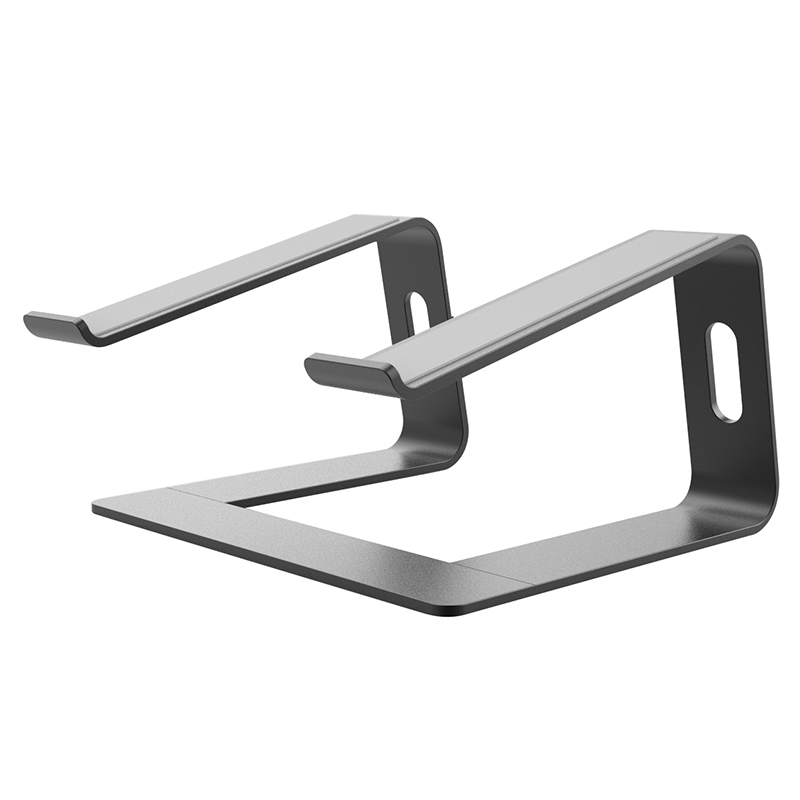
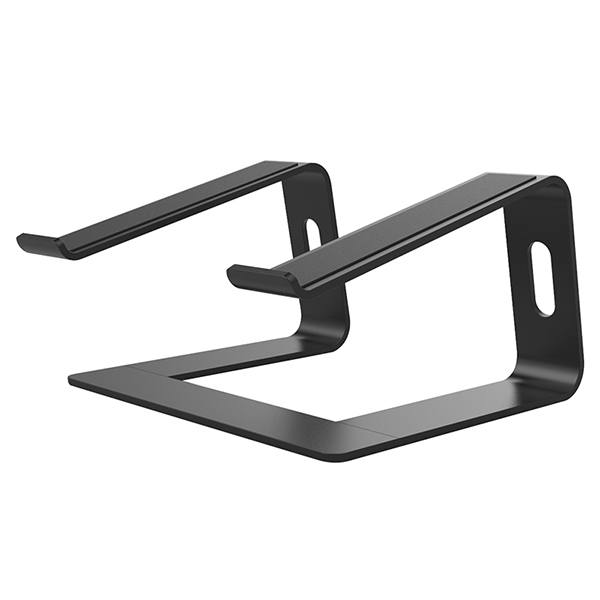
Laptop Stand Amazon Basics,Laptop Stand Amazon Basics Aluminum,Laptop Stand Amazon Basics Ventilated,Laptop Stand Amazon Choice
Shenzhen ChengRong Technology Co.,Ltd. , https://www.dglaptopstandsupplier.com
